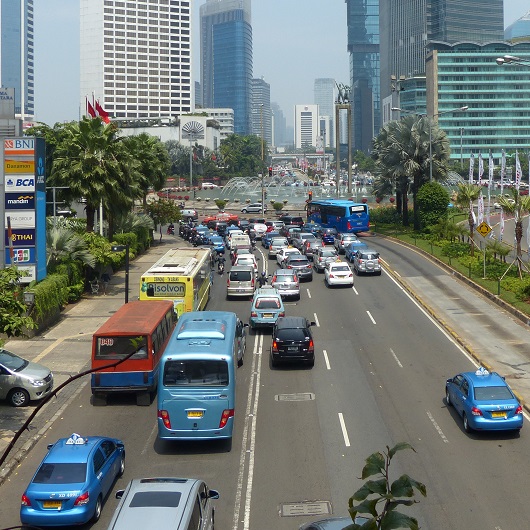Economy of Indonesia: Sacrificing GDP Growth for Financial Stability
The economy of Indonesia is expected to slow further in the next six months ahead according to Standard Chartered Bank economist Fauzi Ichsan. As the US Federal Reserve is expected to raise its key interest rate next year, emerging economies - including Indonesia - will be affected by capital outflows. Moreover, China (one of the most important trading partners of Indonesia) has been experiencing a period of declining economic growth, thus leading to weak demand for Indonesian commodities.

Although outperforming analysts’ initial expectations, the economy of China slowed to a growth pace of 7.3 percent year-on-year (y/y) in the third quarter of 2014, the slowest growth pace in five years, and meaning that it will be hard for Chinese policy makers to achieve the country’s 7.5 percent annual growth target for full-year 2014. One of the factors at play here is that Chinese policy makers aim to transform the domestic economy from one that is over-reliant on trade (export) and investment to one that is based on domestic consumption.
Besides the two external factors - US interest rates and slowing economic growth in China - Indonesia’s economic expansion is also limited due to the country’s wide current account deficit. Indonesia’s current account deficit was USD $9.1 billion, or 4.27 percent of gross domestic product (GDP) in the third quarter of 2014. This figure is near the record high deficit recorded in the second quarter of 2013. Bank Indonesia predicts that the deficit will fall to 3.8 percent of GDP in the third quarter of this year. A wide current account deficit makes the country highly susceptible to capital outflows in times of global shocks as investors doubt the country’s financial stability.
Indonesia's Quarterly GDP Growth 2009–2014 (annual % change):
| Year | Quarter I |
Quarter II | Quarter III | Quarter IV |
| 2014 | 5.22 | 5.12 | ||
| 2013 | 6.03 | 5.89 | 5.62 | 5.78 |
| 2012 | 6.29 | 6.36 | 6.16 | 6.11 |
| 2011 | 6.45 | 6.52 | 6.49 | 6.50 |
| 2010 | 5.99 | 6.29 | 5.81 | 6.81 |
| 2009 | 4.60 | 4.37 | 4.31 | 4.58 |
Source: Statistics Indonesia (BPS)
Ichsan suggests that several improvements should be initiated by the new Joko Widodo-led government. Most importantly, prices of subsidized fuels (both gasoline and diesel) need to be raised by about 50 percent or IDR 3,000 per liter as soon as possible. Although this would cause accelerated inflation, a higher benchmark interest rate (BI rate) and slowing economic growth (to 5 percent y/y) in the short term, it would improve the government budget deficit and current account deficit, and this will lead to accelerated economic growth in the long term (provided that available funds are relocated to infrastructure development).
Regarding the BI rate, Ichsan suggests that the central bank of Indonesia (Bank Indonesia) should raise the rate in two phases. Firstly, the benchmark rate can be raised by 0.50 percent to 8.00 percent in November provided that the government has raised prices of subsidized fuels. The second BI rate hike (also 0.50 percent) can occur in the second half of 2015 in a bid to curb capital outflows amid the higher interest rate environment in the USA.
Higher subsidized fuel prices and the higher BI rate will manage to ease the wide current account deficit to USD $25 billion in 2014, and USD $15 billion in 2015 according to Ichsan. In 2013, the country’s deficit reached USD $29.12 billion, equal to 3.34 percent of GDP. Since late-2011, Indonesia has had to cope with a structural current account deficit, primarily caused by expensive oil imports to meet domestic fuel demand.
Bahas
Silakan login atau berlangganan untuk mengomentari kolom ini

